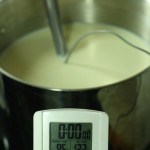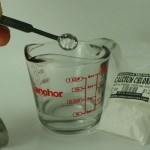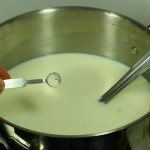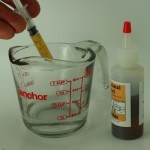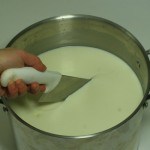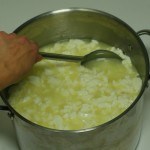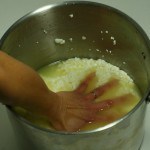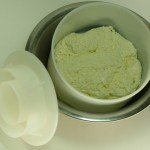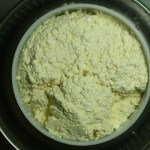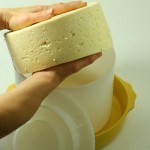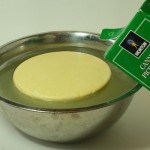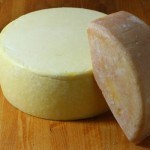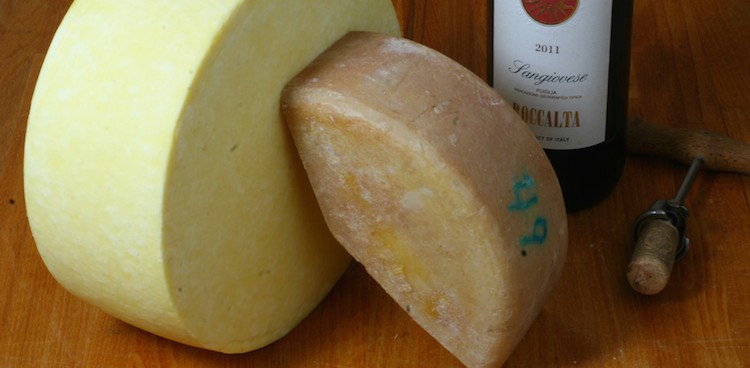
In 1815, French Trappist monks returned from exile to their beloved abbey—Notre Dame du Port-du-Salut—located on the Mayenne River in northwest France. Over the next 50 years, the monks used the dairy breeding and cheesemaking skills they had learned abroad to perfect their cheeses. In 1873, the abbey began distributing “Port-du-Salut” in Paris, a washed-rind cheese that has become iconic of France. Port-du-Salut (or Port-Salut) was produced in the abbey until 1959, when production was moved to a larger local creamery.
Port-Salut and its twin, Saint Paulin, are semisoft cheeses with a distinctive reddish color and pungent aroma from a cocktail of B. linens bacteria used to wash the rinds as they age. Its flavor is sophisticated, yet you don’t need expensive equipment or advanced skills to create it. It matures quickly, so you can taste your work in just a month or two. As with most cheeses, making Port-Salut takes care and patience, but with practice you can achieve great results.
Makes one pound of Port-Salut (recipe may be doubled)
INGREDIENTS:
- 2 gallons whole cow’s milk, preferably ultra-fresh, non-homogenized, low-temperature pasteurized (or certified raw). If using standard pasteurized milk, dilute ½ teaspoon calcium chloride in ¼ cup non-chlorinated water.
- 1/8 teaspoon freeze-dried thermophilic starter culture (Abiasa Thermo Type C)
- 2 ml single-strength rennet diluted in ⅓ cup non-chlorinated water
- 18 ounces non–iodized salt (canning or sea salt)
- 1/16 teaspoon B. linens bacteria
EQUIPMENT:
- 2½ gallon or larger heavy bottomed, nonreactive pot
- Digital cooking thermometer
- Digital timer
- A 3-ml plastic syringe (available at vet/farm stores) for measuring rennet
- Styrofoam bowl, to test flocculation (similar to bowls used for take-out soup)
- Long knife or extra-large commercial whisk, to cut curd
- 4- to 5-inch round molds and follower (the accompanying lid, for even pressing of the curd. Use a 7- to 8-inch “tomme” mold for 4 or more gallons milk)
- Long-handled stainless-steel spoon
- Large bowl or bucket for the brine
- Container to hold whey (volume equivalent to amount of milk used)
- Small pine board and a plastic storage box, both at least twice as large as the cheese
- Spray bottle for washing rind (optional)
Step 1: Heat Milk
Heat the milk to 95°F (35°C), stirring occasionally. Add calcium chloride mixture if using pasteurized milk. Sprinkle starter culture on milk, wait 5 minutes, and stir. Let “ripen” for 30 minutes.
Step 2: Flocculate
Add rennet while stirring vigorously. Start your timer. Stir for about a minute, then “quiet” the milk with your spoon. Float the foam bowl on the milk. As soon as the bowl doesn’t spin freely (indicating flocculation), note the minutes passed from adding rennet. Ideally, this should be 10 to 15 minutes. Multiply the minutes to flocculation by 3.5 to calculate what the timer should read when you cut the curd (e.g., 10 minutes to flocculation = cut curd at 30 minutes on the timer).
Step 3: Cut the Curd
Cut the curd into hazelnut-sized pieces by very gently stirring the curds in a circle for about 10 minutes or until “springy.” Cut oversized curds with the edge of the spoon to make curds mostly uniform.
Step 4: Wash the Curds
Wash the curds by removing 2½ quarts of the whey and replacing it with 5 cups of warm, non-chlorinated water. Slowly stir the curds while heating them to 99–100°F (37–38°C). Stir until the curd knits together when gently squeezed in the palm.
Step 5: Remove the Whey
Remove about 2 quarts of the whey. Gently press the curd to the bottom of the pot several times. Reserve ¼ cup whey for the brine; drain the remaining whey and place the “matted” curd into the mold. Place the follower on top of the cheese and set a half-gallon jar filled halfway with warm water on top to weight.
Step 6: Flip the Cheese
Wait about 10 minutes, then remove the cheese from the mold, flip it, and place back in the mold. Flip again at 30 minutes, then wait 2 hours and flip again. At 2 hours, fill the half-gallon jar completely with warm water and continue to press, flipping the cheese again at 4 hours, then pressing overnight. The cheese should be kept warm and draft free.
Step 7: Brine It
Make the brine in a small clean tub by dissolving the salt in 2 quarts non-chlorinated cool water and adding ¼ cup whey. Add the cheese and let them bathe in the brine for about 3 hours, flipping occasionally.
Step 8: Dry It
Air-dry cheese on the small pine board at room temperature for 24 hours, turning several times. Place cheese and board into the plastic storage box and move to 50–55°F (10–13°C) storage. Open lid slightly to avoid condensation. Flip cheese daily. To develop Port-Salut’s signature red rind, mix the B. linens and ¼ teaspoon. salt with one quart water. Let sit 16 hours. Spray mixture on cheese every third day for the first 10 days. After 2 weeks, brush off all surface mold under running water. The cheese will be ready to eat in 1–3 months.
- 1. Heat the milk to 95°F
- 1. Dissolve calcium chloride into water before adding it to the milk
- 1. Add dissolved calcium chloride to the milk
- 1. Sprinkle starter culture on the top of the milk
- 2. Use an eyedropper or plastic syringe to measure the rennet
- 2. Test the flocculation of the milk by spinning a plastic bowl on the top
- 3. Cut the curd into hazelnut-sized pieces with a long knife
- 4. Spoon away some of the whey and replace it with warm water to wash the curd
- 5. Press the curds to matt them together
- 5. Place matted curds into a cheese mold
- 5. Place the “matted” curd into the mold
- 5. Weigh down the top of the mold with a bottle of warm water
- 6. Flip the cheese several times while it is pressed
- 7. Brine the cheese using salt with no additives
- 8. Dry the cheese on a pine board
- 8. Wash the pressed cheese in a solution of B. linens, salt, and water to get a red rind


